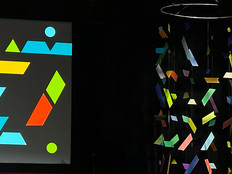Student-Source Mobile Apps to Stay Ahead of the Curve
NASA recently occupied the headlines, not for a shuttle launch or moon walk, but for successfully crowdsourcing a test of the Robonaut 2, a robotic astronaut assistant.
NASA was so impressed with the quality of the 3D modeling submitted by the community that the agency has already organized two more challenges — and it’s only the latest group to jump on the crowdsourcing bandwagon. It’s time for higher education to be next.
Of the few pioneer universities that have applied a crowdsourcing — or in this case, studentsourcing — model at their institution, all have experienced impressive results.
The model has been especially successful when used to design and implement new mobile applications. Not only is it high time, but it is also a necessity that colleges and universities leverage studentsourcing as a means to engage the student body, decrease costs and time, and improve implementation of mobile applications at their institutions.
There are reasons top Fortune 500 companies have begun implementing crowdsourcing: access to a flexible workforce, a variety of creative talent, cost-effectiveness, fast project delivery and reduced time to market. Studentsourcing has one key difference from crowdsourcing: a defined network of students.
Students are a university’s consumers. How better to provide consumers with the mobile resources they want than by involving them in the design process? If this studentsourcing model is such a success, why not implement it for all university projects?
The key to successful studentsourcing is an excited community, eager to volunteer its time. Mobile is the kind of project a student body will get excited about — even the least tech-savvy student dreams of creating the next AngryBirds or Snapchat app.
Bryant University is one of the pioneer institutions that has embraced studentsourcing to improve both its mobile offering and student engagement by establishing an annual “app-a-thon” competition. Each year, students submit ideas for mobile apps that they think would solve a problem or meet a need on campus. The submissions are reviewed by a panel of judges, who select a winner based on predefined criteria including uniqueness, look and feel, and simplicity.
Bryant University is ahead of the curve with studentsourcing because it recognized a need and was willing to get creative to try and solve it.
So how should an institution go about studentsourcing a mobile app? It’s simple, really.
Determine the project scope and guidelines.
Make it clear to the students what the goal of the project is, and determine what constitutes a submission (vague idea being one end of the spectrum and full coded mock-up being the other end).
Set up a reasonable time frame for students to submit proposals and for the IT department to implement the final mobile application.
Engage students and faculty. Whether your studentsourcing model is based on a contest or open call, the campus body needs to know about it.
Take to social media, the student portal, the public website and posters in the student union.
Get your faculty involved as judges and submission reviewers.
Take time to review submissions and provide responses. It’s important to let your students know that they are being heard. Respond to every submission, and provide feedback where you can to encourage engagement and interest in the process.
One reason you should take the time to reply to each submission is for the following year.Studentsourcing should be an annual or biannual process where students are encouraged to keep participating.
Once you’ve picked a winner, it’s time to create the mobile application. This step depends on the resources available to your institution.
When the time comes to roll out the app, the good news is you’ve already done most of your marketing to your students and faculty. Announce the results of the studentsourcing campaign, and let everyone know where they can download the app.









